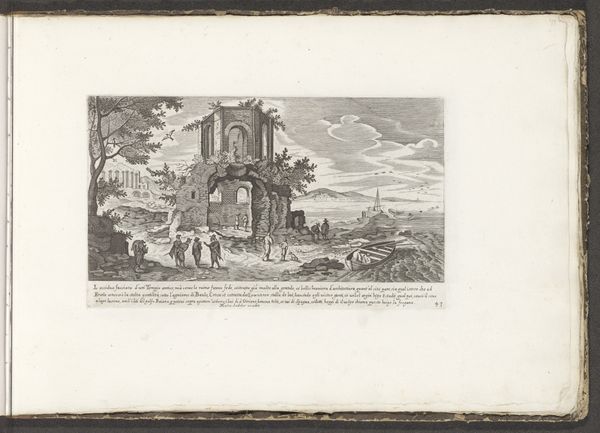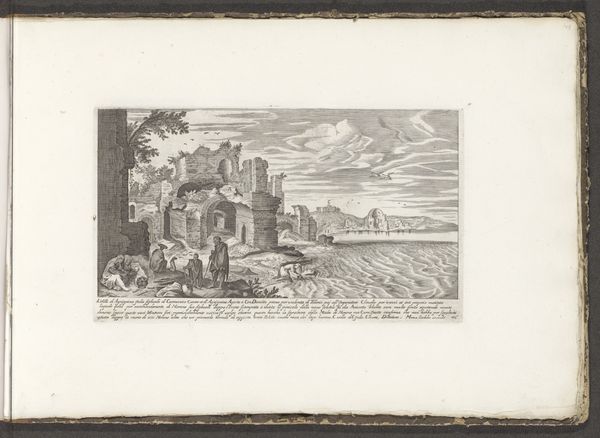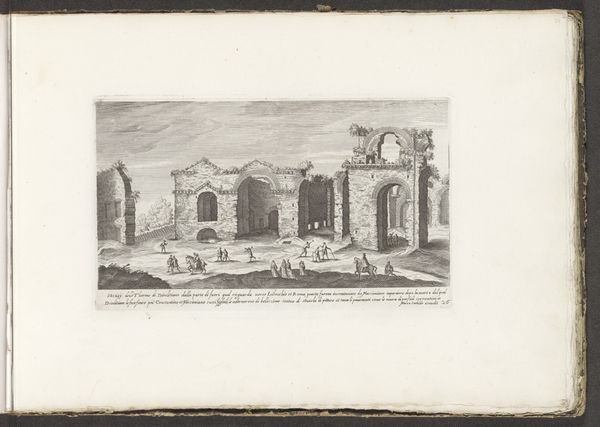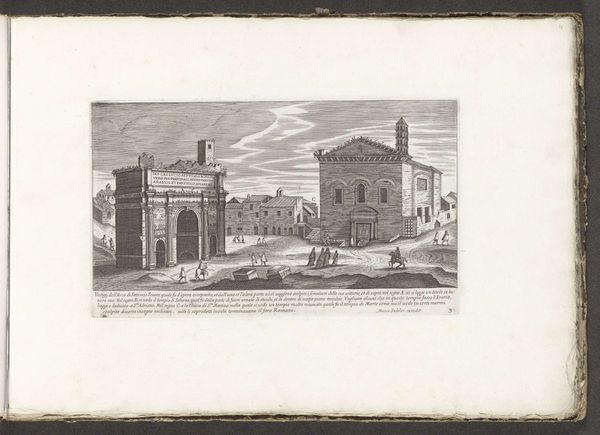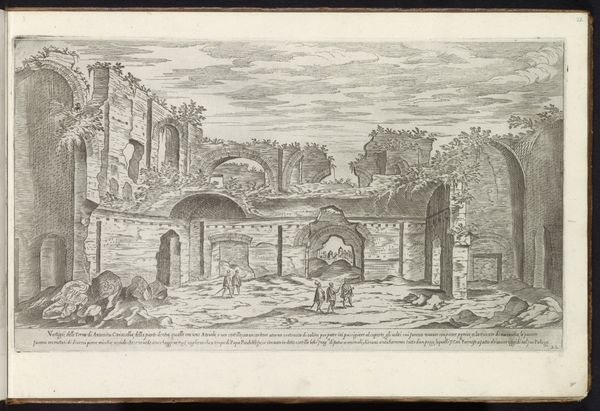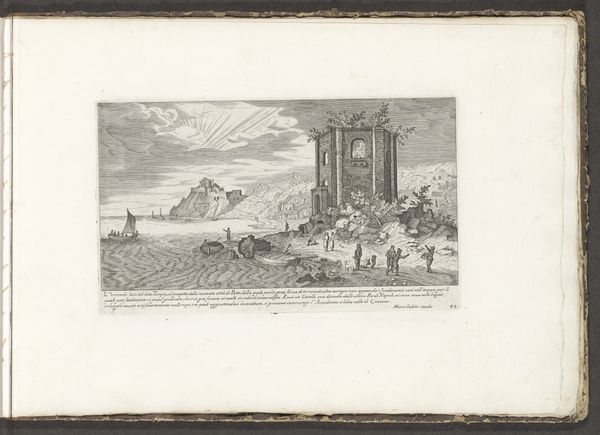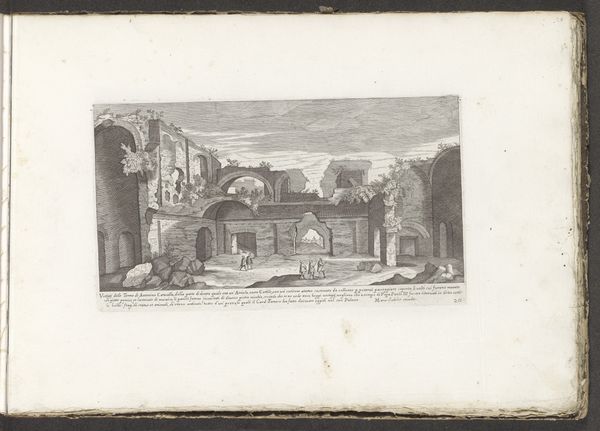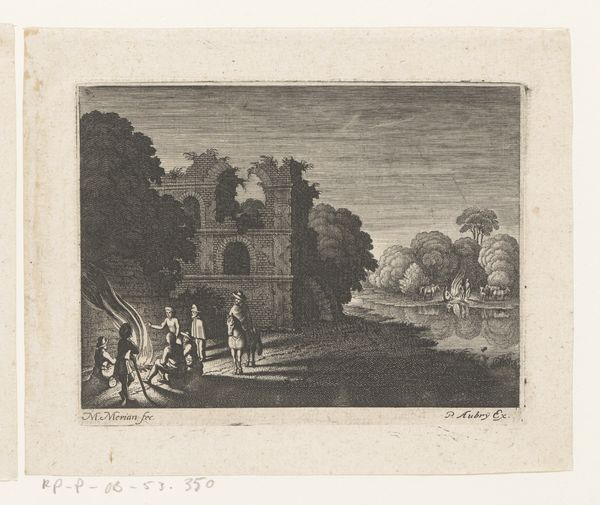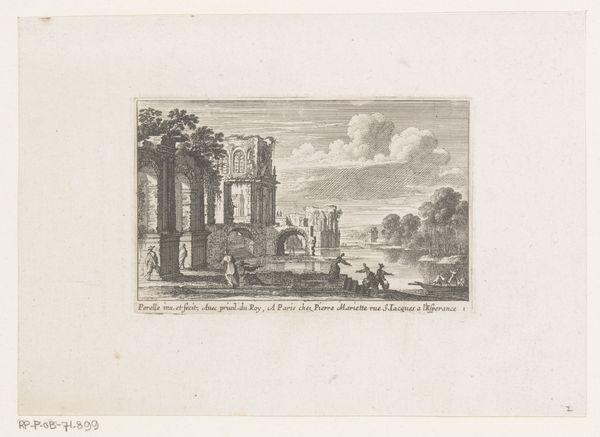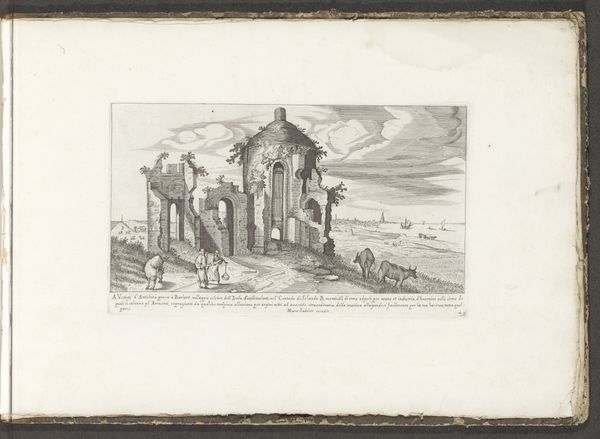
drawing, print, etching, engraving
drawing
baroque
etching
landscape
classical-realism
perspective
cityscape
history-painting
engraving
Dimensions: height 158 mm, width 267 mm
Copyright: Rijks Museum: Open Domain
This print of ruins at Misenum was made using engraving, a meticulous intaglio process. The artist would have used a tool called a burin to carve lines directly into a metal plate, likely copper. Look closely, and you can see how the varying depths and densities of these lines create a range of tones and textures. The image depicts not only the stones of the ruins themselves, but the human activity that surrounds them. You can see that the engraver paid careful attention to details of the clothing, the musculature of the animals, and the play of light across the scene. This involved many hours of careful labor. The print would have been produced in multiples. It is a testament to the engraver's skill, requiring a deep understanding of materials and processes. Appreciating the artistry of such a print means recognizing the technical skill involved, and the many hours of labor required. This challenges the traditional hierarchy between art and craft, elevating the status of skilled artisans and their contributions to visual culture.
Comments
No comments
Be the first to comment and join the conversation on the ultimate creative platform.
